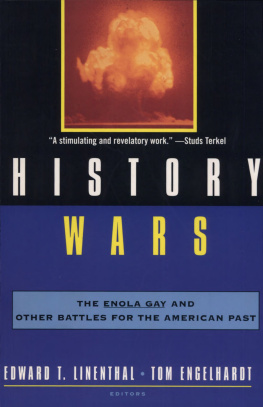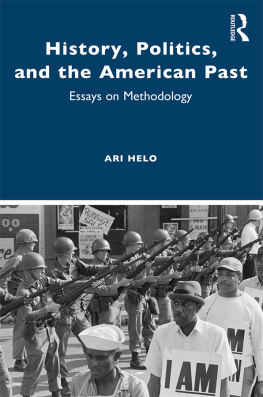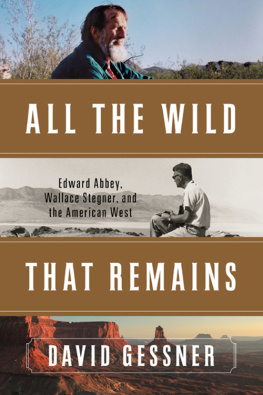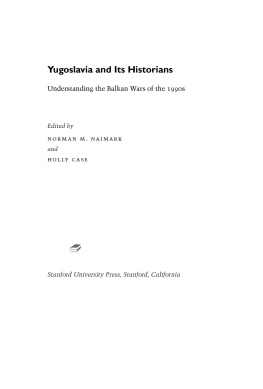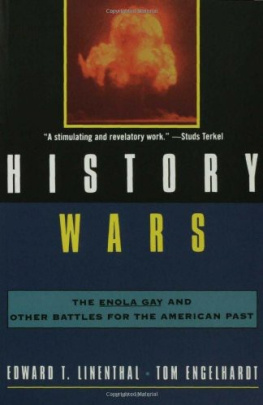From Kirkus Reviews
Linenthal (Preserving Memory: The Struggle to Create America's Holocaust Museum, 1995, etc.), Engelhardt, and six other historians use a bitter controversy to consider America's attitudes toward its past. The curators of the Smithsonian Institution's National Air and Space Museum planned an ambitious exhibit centered on the Enola Gay, the airplane used to drop the atomic bomb on Hiroshima on Aug. 6, 1945. The exhibit, marking the event's 50th anniversary, would have described the intense desire to end the war that led to the bombing, but also the way the bombing's nightmarish effects infected the world with fear of nuclear annihilation. Conservatives claimed the exhibit would be anti-nuclear and anti-war, throwing into question the decision to drop the bomb, and would transform the Enola Gay's crew from heroes to terrorists. Under relentless attack, the museum backed down and its director resigned. The Enola Gay is now displayed virtually out of context. These essays take the controversy as the starting point for ruminations on American attitudes toward war, the nuclear age, and, with exceptional insight, history itself. The writers are not uniformly supportive of the planned exhibit: Former air force chief historian Richard H. Kohn concludes, for instance, that it wasn't a balanced presentation; New York University history professor Marilyn B. Young says that it was. But there is unanimous regret among the essayists that an opportunity was lost, as Kohn writes, to inform the American people... about warfare, airpower, World War II and a turning point in world history.'' The Enola Gay conflict, writes University of Wisconsin history professor Paul Boyer, was aboutthe disparity between the mythic past inscribed in popular memory and the past that is the raw material of historical scholarship.'' This round of history wars, conclude the writers in this excellent collection, was won by the myth-makers. -- Copyright 1996, Kirkus Associates, LP. All rights reserved.
Review
"In their illuminating explorations of contemporary American struggles with Hiroshima and Nagasaki, these essays contribute to much-needed nuclear-age wisdom. "-Robert Jay Lifton
"Informative and compelling. "-Eric Foner
"A stimulating and revelatory work. "-Studs Terkel

TOM ENGELHARDT AND
EDWARD T. LINENTHAL
O n November 23, 1994, National Public Radios Morning Edition informed its listeners that one of the iconic artifacts of World War II had arrived at the Smithsonian Institutions National Air and Space Museum on the Mall in Washington, D.C. At about a quarter to one, under a cloud-covered moon, the reporter began, four police cars cruised down Independence Avenue, escorting what looked almost like a float in the Macys Thanksgiving Day Parade. A flatbed truck carried a huge tube more than fifty feet long, wrapped in what seemed to be white plastic. The tube was the front half of the plane that carried the bomb that killed thousands of Japanese on August 6, 1945.
Here, under wraps, was the imposing fuselage of the Enola Gay , the famed B-29 Superfortress that dropped the first atomic bomb on Hiroshima. The aircraft, credited by many with ending a war of unparalleled ferocity, saving countless American lives, and bringing peace to a war-weary world, was now to rest temporarily in the museum that displayed the Wright brothers first plane, Charles Lindberghs ocean-spanning Spirit of St. Louis , and the Apollo spacecraft that brought humans to the moon.
Even though it entered the museum in the dead of night, the Enola Gay was shadowed by another story of wars end. For National Public Radios reporter pointed out that the aircrafts route to the museum was not deserted. One protester sang a song of the hibakusha, those who had survived the atomic bomb the Enola Gay dropped on Hiroshima (a national peace song in Japan, the reporter noted). Elsewhere en route, demonstrators from the pacifist Catholic Worker movement unfurled a banner that read Disarm.
For fifty years, these two storiesof a weapon that brought peace and victory, and of a weapon that brought destruction and fear to the worldrested uneasily in American consciousness. Now, the aircrafts fuselage was headed toward an exhibit that promised to bring those two narratives together in a single museum space. With the plane as its central icon, that show was to explore the end of a hot war and the beginning of a cold one. As conceived by the Smithsonians curators and advisers, the exhibit was to examine the bombs creation, the decision to use it against Japanese cities, the Enola Gay s mission, the ground-level effects of atomic weaponry, the bombs role in ending the war, and the new era it inauguratedas well as the ways in which decades of historical research and debate on these topics had altered and deepened our understanding of them.
Such an exhibition, however, was not to be. For months, after a draft script of the proposed show was released to the media by the Air Force Association, a military lobbying group, the Smithsonians managers and curators as well as the historians on whom they relied were subjected to increasingly angry charges: they had hijacked history; they were anti-American; they were practicing politically correct curating; they were projecting the countercultural values of the Vietnam era onto Americas last good war. The fierceness of this response eventually doomed the National Air and Space Museums planned show amid a remarkable controversy that pitted museum curators and historians against military officials and veterans lobbying groups, as well as much of the media and Congress.
The exhibit was abandoned by a humiliated museum administration in January 1995 (to be replaced by a blandly upbeat display of the Enola Gay itself). Meanwhile, there were surprisingly few other memorial festivities celebrating the fiftieth anniversary of World War IIs endthe greatest military victory in U.S. historyeven if the final moments of that war were anything but dead in public memory. In fact, it soon became apparent that they still held a rawness startling for events so long past. A oncefamiliar triumphant tale of a victory over Germany and Japan that was to lead to an American Century now seemed to end in disarray on August 6, 1945, in the rubble of Hiroshima. As August 6, 1995, approached, Peter Jennings anchored an ABC television documentary questioning the decision to drop the bomb, while Ted Koppel defended that decision on the same networks Nightline . Countless talk-radio programs, magazine and news articles, editorials, books, and book reviews argued over the minutiae of policymaking in 1945 with a passion and vitriol more often associated with fast-breaking news; and increasingly upset World War II veterans struggled to reassert to an oddly resistant nation the victory story they believed was their due.

